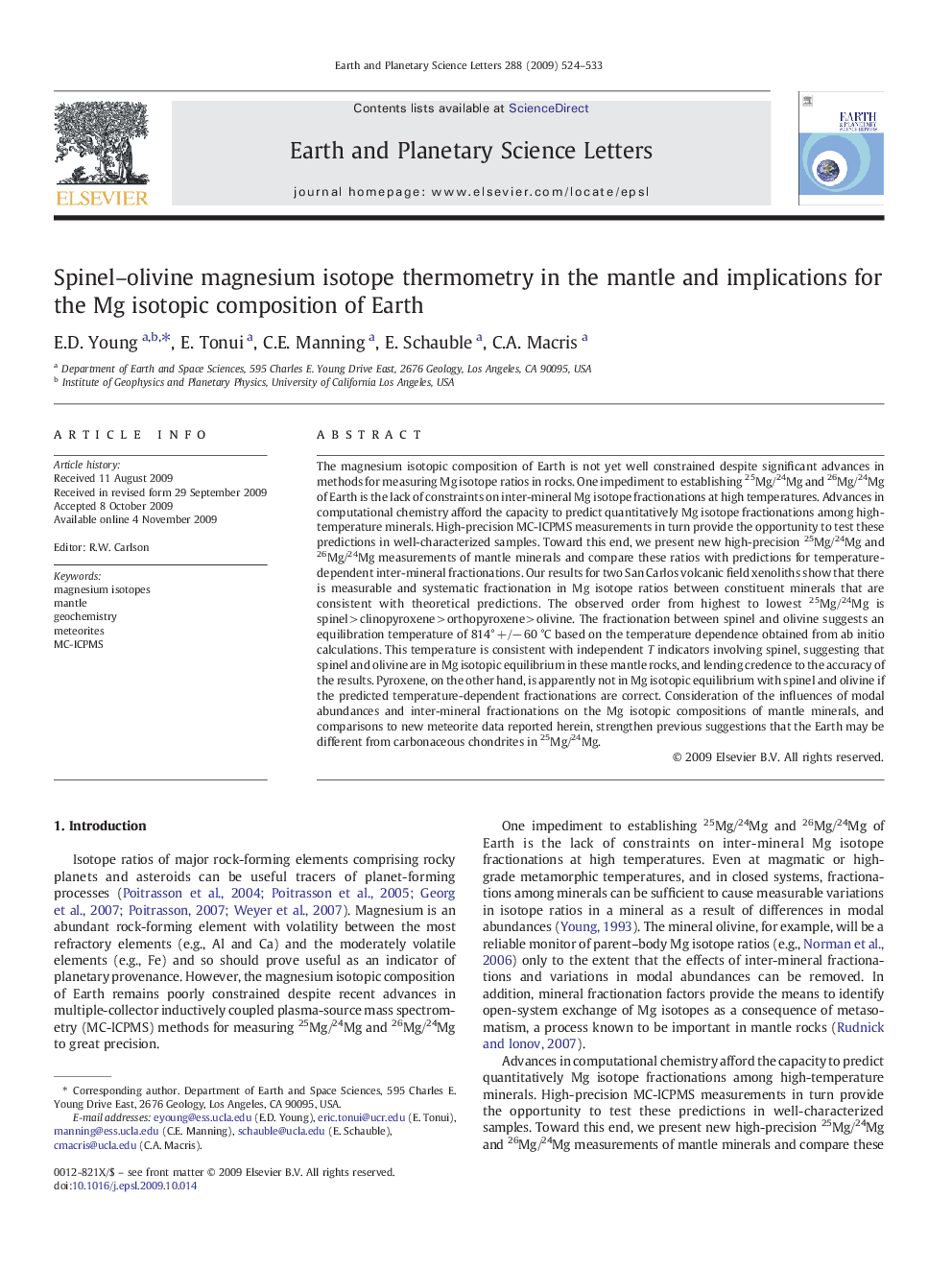| Article ID | Journal | Published Year | Pages | File Type |
|---|---|---|---|---|
| 4678752 | Earth and Planetary Science Letters | 2009 | 10 Pages |
The magnesium isotopic composition of Earth is not yet well constrained despite significant advances in methods for measuring Mg isotope ratios in rocks. One impediment to establishing 25Mg/24Mg and 26Mg/24Mg of Earth is the lack of constraints on inter-mineral Mg isotope fractionations at high temperatures. Advances in computational chemistry afford the capacity to predict quantitatively Mg isotope fractionations among high-temperature minerals. High-precision MC-ICPMS measurements in turn provide the opportunity to test these predictions in well-characterized samples. Toward this end, we present new high-precision 25Mg/24Mg and 26Mg/24Mg measurements of mantle minerals and compare these ratios with predictions for temperature-dependent inter-mineral fractionations. Our results for two San Carlos volcanic field xenoliths show that there is measurable and systematic fractionation in Mg isotope ratios between constituent minerals that are consistent with theoretical predictions. The observed order from highest to lowest 25Mg/24Mg is spinel > clinopyroxene > orthopyroxene > olivine. The fractionation between spinel and olivine suggests an equilibration temperature of 814° +/− 60 °C based on the temperature dependence obtained from ab initio calculations. This temperature is consistent with independent T indicators involving spinel, suggesting that spinel and olivine are in Mg isotopic equilibrium in these mantle rocks, and lending credence to the accuracy of the results. Pyroxene, on the other hand, is apparently not in Mg isotopic equilibrium with spinel and olivine if the predicted temperature-dependent fractionations are correct. Consideration of the influences of modal abundances and inter-mineral fractionations on the Mg isotopic compositions of mantle minerals, and comparisons to new meteorite data reported herein, strengthen previous suggestions that the Earth may be different from carbonaceous chondrites in 25Mg/24Mg.
